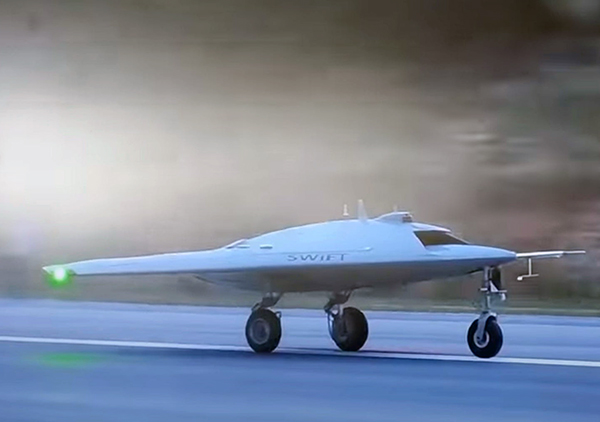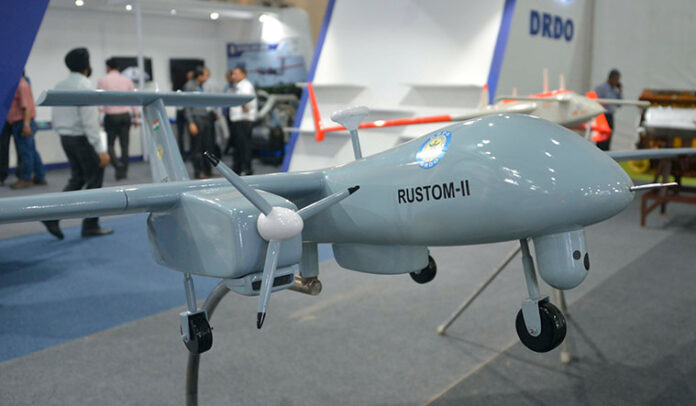“Drones overall will be more impactful that I think people recognize, in positive ways to help society”
– Bill Gates
A drone or a drone system references the broader ecosystem that involves the unmanned vehicle(s) along with a few other components. Such components include an autonomous or a human operated control system from the land, sea or air and a command-and-control system in order to link them together coupled with a maintenance and operating system. Drones as a segment require significant research and development efforts. Being a fast-evolving area, there are frequent technological upgradations both in capacity as well as capability. It is therefore imperative to have a focused approach towards R&D efforts in drones. With an ever-increasing utility matrix for drones, the application areas are gradually moving towards infinite. In India, while there are many private industry players also who are investing time and money in this segment, DRDO has been leading some of the most critical research efforts in this segment. With a focus on responsibility and accountability, DRDO has been pushing boundaries and now more than ever is poised to lead the country’s R&D efforts in this segment. R&D for development of robotic products and technologies associated with robotics & artificial intelligence interface are undergoing. In this regard, a national challenge was also initiated by DRDO to tap talent in robotics and artificial intelligence among students, academia and entrepreneurs /industry in the areas of robotics related to defence.

Over the past few years, drones have become central to the functions of various businesses and government organizations and have managed to pierce through areas where certain industries were either stagnant or lagging behind. From quick commercial deliveries at rush hour to scanning unreachable military bases, drones have proved and continue to be extremely beneficial in unreachable and low connectivity areas for timely and efficient deliveries.
A UAV for instance is a powered, aerial vehicle without a human pilot which uses aerodynamic forces to fly and fulfill “dull, dirty or dangerous” tasks. The applications of a UAV pan across sector and geography serving commercial, scientific and security requirements among others. With the ability to reach inaccessible areas, UAVs hold the potential to be omnipresent across sectors, ranging from military and civil, and are disrupting every workflow including data capturing, goods delivery, area mapping among others. Few of the more critical application areas of UAVs include surveillance and offensive operations as well as for assessing damage, deliver aid and locate victims at the time of natural disasters.
In addition, DRDO Young Scientist Laboratory for Asymmetric Technologies has been working on drone swarm technologies towards strengthening the asymmetric warfare capabilities. For UAV swarm-based applications to be most effective, a key component is the communication system shared by the drones as well as the base stations on the ground. In line with this requirement, DRDO last year demonstrated an operational decentralised swarm of 25 drones with minimal human intervention. This capability was demonstrated as part of a three-day function, linked to the ongoing celebrations marking the 75th year of independence, in Jhansi in November last year. The capabilities showcased included both communications, defensive as well offensive features including distributive sensing, decision making, reconfigurable path planning and autonomous attack. The algorithms with the drones are reported to have advanced features arming the swarm with niche capabilities, distinct from individual drones.
The Aeronautical Development Establishment (ADE), for instance, is a key aeronautical systems design lab of DRDO involved in the development of UAS and systems for manned aircraft including simulators. ADE’s areas of work include:
• UAV aerodynamics, structures, propulsion systems, flight control.
• Combat aircraft systems.
• Micro air vehicles.
• Flight simulation.
• Air weapons integration and
• Aerial image exploration.
The capabilities existing at the DRDO lab include among others prototype and manufacturing engineering facilities, electronics package facility and real time simulators. Similarly another DRDO lab, the Center for Airborne Systems (CABS), is also involved in development of key technologies and infrastructure including ground exploration systems, IFF capability as well as other systems and sub systems required to build efficient platforms for the purpose of surveillance.
DRDO has designed and developed drones for intelligence, surveillance, reconnaissance, target acquisition / tracking and image exploitation such as Nishant, Panchi, and Rustom II, a medium altitude long endurance UAV built for the Indian armed forces. In fact, the Netra mini quadcopter UAV, which has received orders from the Indian Army, was also jointly developed by DRDO and Idea Forge after which the latter took up production of the same.
DRDO has also worked towards design and development of target drones including Fluffy, Ulka, Lakshay-I & 2 and the latest Abhyas for autonomous flight with the help of an autopilot. ABHYAS – the High-speed Expendable Aerial Target (HEAT) is a 75kg drone designed & developed by DRDO’s ADE, Bengaluru and can be used as an aerial target for testing and evaluation of various missile systems. The performance of Abhyas was monitored through telemetry and various tracking sensors including Radars and Electro Optical Tracking System (EOTS). Launched using twin underslung boosters which provide the initial acceleration to the vehicle, Abhyas is gas turbine powered which helps it in sustaining a long endurance flight at subsonic speed. Other technologies that Abhyas is equipped with include a MEMS based Inertial Navigation System (INS) for navigation, a Flight Control Computer (FCC) for guidance and control, a laptop-based Ground Control Station (GCS) to monitor and monitor navigation of the autonomous flight. Once equipped with better design, reliable sensors and other multifunctional abilities, the variants or upgrades of Abhyas could potentially have much more powerful utility and more high-end capability.
DRDO has also undertaken a wide array of technology enabled initiatives in coordination with Armed Forces, startups, MSMEs, private sector and academia. The anti-drone technology, including the capability elements of detection, tracking, surveillance and both hard kills (laser-based hard kill to destroy the drone) and soft kills (for jamming the communication links of drone), have been developed and transferred to industries for mass production. In fact, the defence forces have reportedly signed a contract with BEL Electronics1 last year for supply of DRDO technology based anti-drone system called the Drone Detect, Deter and Destroy System (D4S).
Drones are globally utilized across industries for varied uses with the perspective to either increase work efficiency, enhance work productivity, decrease workload, reduce production costs, improve accuracy or to resolve security issues on a large scale. Adoption of the drone technology across industries has exponentially increased in the last few years as more and more industries and businesses have realized the potential, scope and scale these systems bring to the table. Whether controlled by a remote or accessed via a smartphone app, drones are capable of reaching the most remote areas with little to no manual intervention and hence require the least amount of effort, time, and energy. This results in saving operational costs as well. This is a primary reason why these systems are being researched and developed for both military and commercial reasons. There are multiple areas where DRDO is researching in the unmanned space. With aerial unmanned platforms at advanced stages of development and or production, ground and underground unmanned vehicles are also being researched and developed upon. DRDO labs including the VRDE with their MUNTRA UGV (which is a BMP Class vehicle converted into an autonomous one) or DAKSH (battery operated autonomous robot primarily for bomb recovery) are involved in the design and development of such systems.
To summarize, the defence sector has seen many technological breakthroughs which have totally transformed the dynamics of the battlefield. There is significant design and development that is and will continue to be required if India is to stay ahead of the curve. It is important that the design and development capabilities in the country be continued to be enhanced organically or inorganically. This would require both the government and the industry working together. There is enough business case and opportunities in unmanned vehicles to justify an efficient R&D investment by both the government as well as the industry. This decade is very critical in many aspects, and it will be important for India to be able to lead the global developments in the unmanned space.


















